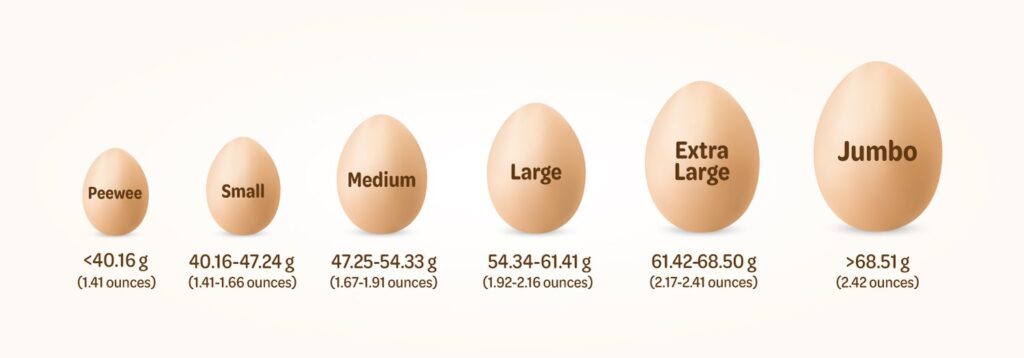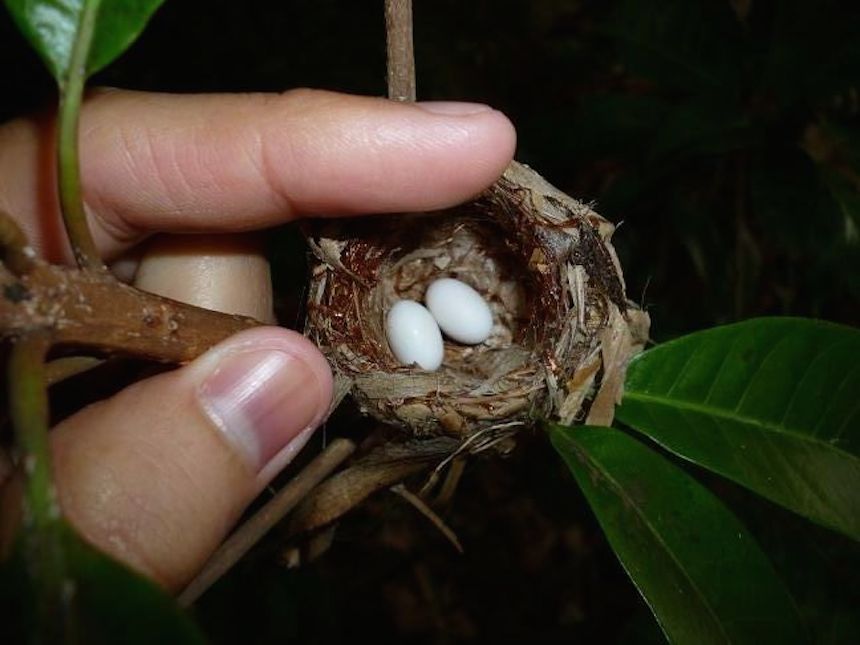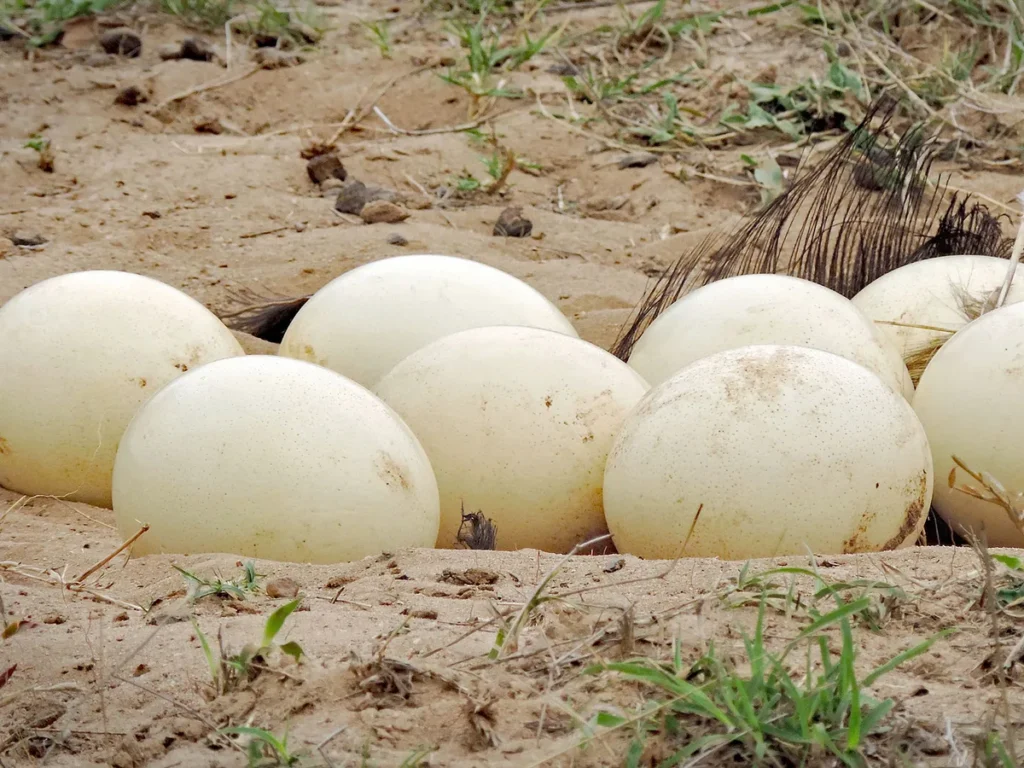Egg Sizes Around the World
From the Smallest to the Largest
Eggs are an essential part of diets worldwide, coming in various sizes and colors depending on the species that lay them. From the tiniest eggs of hummingbirds to the enormous eggs of ostriches, the diversity in size is astonishing. This article explores the smallest and largest eggs found in nature, with fascinating examples of each. We will also look at some record-breaking eggs, unique adaptations, cultural significance, and interesting egg-related facts.

The Smallest Egg in the World
Bee Hummingbird (Mellisuga helenae)
The smallest known egg is laid by the bee hummingbird, native to Cuba. This tiny bird lays eggs that measure about 1 cm (0.39 inches) long and weigh around 0.4 grams (0.014 ounces)—roughly the size of a pea. Despite their minuscule size, these eggs hatch into hatchlings that grow rapidly into dazzling adult hummingbirds.
Other Small Egg Examples:
Vervain Hummingbird (Mellisuga minima): Found in the Caribbean, its eggs are slightly larger than those of the bee hummingbird but still among the smallest in the world.

Goldcrest (Regulus regulus): A tiny European bird, its eggs measure approximately 1.3 cm (0.5 inches) in length.
Fairy Tern (Gygis alba): This seabird lays incredibly small eggs and does so without building a nest, placing them directly on tree branches.
Some Frogs and Fish: Some species of frogs and fish lay minuscule eggs that are barely visible to the naked eye.
The Largest Egg in the World
Ostrich (Struthio camelus)
The ostrich lays the largest eggs in the world, measuring about 15 cm (5.9 inches) in length and weighing up to 2.3 kg (5 pounds). These massive eggs have a thick shell, requiring a strong effort from the chick to hatch. They are also an important source of food in some cultures and can be equivalent to about 24 chicken eggs when cooked.

Other Large Egg Examples:
Emu (Dromaius novaehollandiae): The emu, a large flightless bird from Australia, lays eggs that are about 13 cm (5.1 inches) long and have a deep green shell.
Cassowary (Casuarius spp.): Native to New Guinea and northern Australia, cassowary eggs are large and green, measuring 9–14 cm (3.5–5.5 inches) in length.
Rhea (Rhea americana): This South American bird lays eggs similar to an emu but slightly smaller.
Leatherback Sea Turtle (Dermochelys coriacea): The largest sea turtle lays eggs around 5.3 cm (2.1 inches) in diameter.
Whale Shark (Rhincodon typus): The largest fish in the world, the whale shark, lays the largest known egg of any species at over 30 cm (12 inches) long.
Record-Breaking Eggs
Heaviest Egg Ever Laid by a Living Species
- The heaviest bird egg ever recorded was laid by an ostrich in Sweden, weighing an astonishing 2.589 kg (5.71 lbs). Ostrich eggs have an incredibly thick shell, making them some of the most durable eggs in the world.
Largest Single Egg Laid by an Extinct Species
- The elephant bird (Aepyornis maximus) from Madagascar holds the record for the largest egg of any known species, extinct or living. These eggs were over 30 cm (11.8 inches) long and could hold around 9 liters (2.4 gallons) of liquid, making them the largest eggs ever laid in terms of volume.
- To put it into perspective, an elephant bird egg was about 100 times the size of an average chicken egg!
Largest Egg in Proportion to Body Size
- The kiwi (Apteryx spp.) lays an egg that is up to 20% of its body weight, making it the largest in proportion to the mother’s size. This is equivalent to a human giving birth to a baby the size of a four-year-old child!
Longest Incubation Period
- The wandering albatross lays eggs that can take up to 80 days to hatch, one of the longest incubation periods among birds.
- Octopus Eggs: The deep-sea octopus (Graneledone boreopacifica) holds the record for the longest brooding period of any known animal over four years! The mother carefully guards the eggs without eating until they hatch.
Most Eggs Laid in a Single Clutch
- Reptiles such as the leatherback sea turtle can lay up to 110 eggs in one clutch, ensuring that at least some offspring survive despite high predation rates.
- Insects like the termite queen can lay thousands of eggs daily, producing millions over her lifetime.
Strangest Egg Shape
- The guillemot (Uria aalge), a seabird, lays pear-shaped eggs that roll in a tight circle instead of rolling off cliffs. This adaptation prevents eggs from falling into the ocean.
Most Expensive Egg Ever Sold
- The Fabergé eggs, made in Russia between 1885 and 1917, are among the most famous and valuable decorative eggs. One Fabergé egg, known as the Rothschild Fabergé Egg, sold for $18.5 million USD at an auction in 2007.
Smallest Reptile Egg
- Some species of geckos and skinks lay eggs as small as 0.5 cm (0.2 inches) in diameter. These tiny eggs hatch into miniature versions of the adult reptiles.
Egg Adaptations and Unique Features
Eggs are not just about size; their colors, textures, and structures are designed to protect and nurture the embryo inside. Here are some fascinating adaptations:
Camouflaged Eggs: Many ground-nesting birds, like plovers and quails, lay speckled eggs that blend with their surroundings to avoid predators.
Translucent Eggs: Some frog species lay jelly-like transparent eggs in water to reduce visibility to predators.
Eggshell Strength: Ostrich eggs can withstand pressures of up to 50 kg (110 lbs), making them one of the toughest eggshells in nature.
Soft-Shelled Eggs: Many reptiles, like snakes and turtles, lay leathery eggs that allow gas exchange and prevent excessive water loss.
Egg Shape Adaptation: Birds like guillemots lay pear-shaped eggs, which prevent them from rolling off cliffs where they nest.
Cultural and Culinary Significance of Eggs
Eggs have played an essential role in human history, from their dietary importance to their symbolic meanings in different cultures.
Eggs in Cuisine: Chicken eggs are the most commonly consumed worldwide, but quail, duck, and even ostrich eggs are also part of many diets.
Symbolism in Different Cultures: In many traditions, eggs symbolize rebirth and fertility. The decorated Easter egg is a famous example.
Ancient Uses: Ancient civilizations used eggs in religious rituals, medicine, and even as a form of currency.
Did You Know? Fun Egg Facts!
The Chicken Egg is Not the Standard Size Worldwide: While chicken eggs are the most commonly consumed, their size varies significantly by breed and region.
The Largest Chicken Egg Ever Recorded weighed 454 grams (16 ounces) and had a double yolk and double shell.
Octopus Eggs Can Take Years to Hatch! The deep-sea octopus (Graneledone boreopacifica) is known to brood its eggs for over 4 years, one of the longest incubation periods in the animal kingdom.
Some Eggs Change Color! The American robin’s eggs start bright blue but can become slightly faded due to exposure to sunlight.
Cuckoos Trick Other Birds: Cuckoos lay their eggs in the nests of other birds, and their eggs often mimic the host’s eggs in color and pattern to avoid detection.
The Sand Tiger Shark’s Eggs Have a Fierce Battle! In the womb, the first shark pup to hatch eats its unhatched siblings in a process called intrauterine cannibalism.
Reptile Eggs Can Determine the Baby’s Sex: In many reptiles, including alligators and turtles, the temperature at which the eggs are incubated determines whether the offspring will be male or female.
Some Birds Lay Eggs That Take Months to Hatch: The wandering albatross lays eggs that can take up to 80 days to hatch, one of the longest incubation periods among birds.
Conclusion
Egg sizes vary dramatically across species, from the tiny hummingbird eggs to the massive ostrich eggs. These fascinating differences highlight the diversity of the animal kingdom and the unique adaptations of each species. Whether for survival, reproduction, or human consumption, eggs play a crucial role in the natural world.
By understanding egg sizes, we can appreciate the marvels of nature and the evolutionary strategies that different species have developed over millions of years. From record-breaking eggs to fascinating adaptations, the world of eggs is filled with surprises and wonders waiting to be explored!